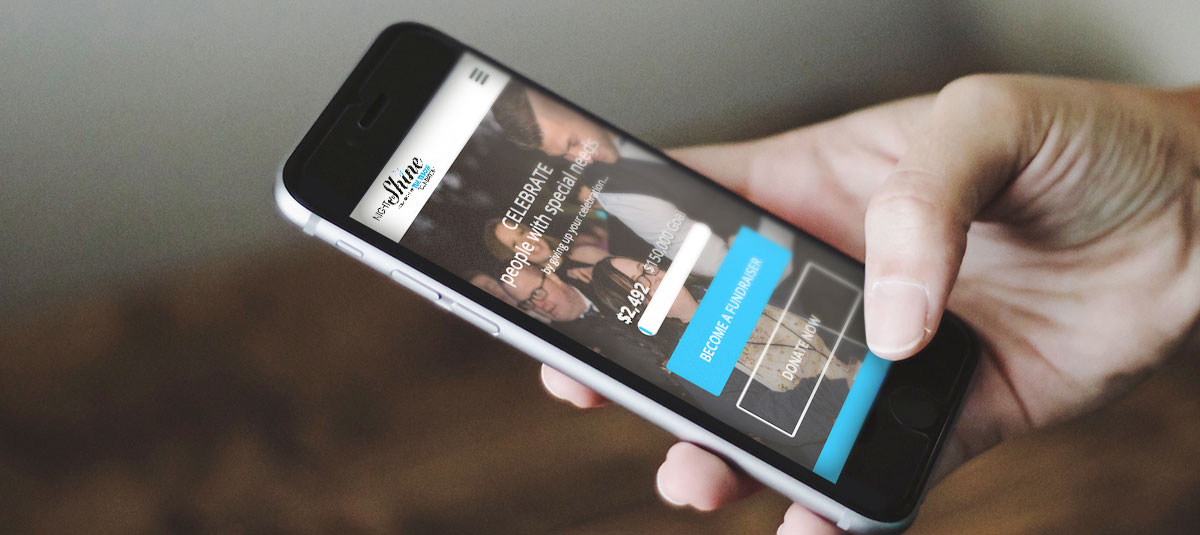9 Nonprofit Trends That Will Influence 2018

In a lot of ways, trends are feedback. Whether it’s Beanie Babies or Bitcoin, they offer us a window into what large segments of the population like, what they hate, and how they like to be engaged. To stay relevant to your audience, you have to pay attention to trends.
When the year starts to wind down, it’s an opportune moment to look back on the past year and see which trends stuck out. Further, it’s the perfect time to analyze how these trends will carry into the next year and how they could influence other, future trends.
The hard part is figuring out which trends are worth paying attention to and which are worth ignoring. To help, we spoke with various people across different departments and teams at Classy in:
- Senior leadership
- Marketing
- Graphic Design
- Engineering
- Product management
- Data science
Each person was asked what they noticed in their area of expertise for 2017, and how they see it influencing the future. Below, we dig into the exciting answers they provided and what your organization should consider paying attention to.
Why America Gives: How Current Events, Technology, and Seasonality Impact Donor Plans
1) Recurring Giving Reigns Supreme
Recurring giving ranked highest on the list of nonprofit trends we saw take center stage in 2017. Further, it’s a trend we saw carry over into multiple departments at Classy.
Scot Chisholm, CEO and cofounder, noticed that “donor-advised funds (DAF) grew in 2017 after they were already up in popularity 18 percent from 2014 to 2016.” An easy way to think about a DAF is like a charitable savings account.
Donors can contribute to a DAF as often as they like, and then can recommend grants to their favorite charity which pull from the account. Donors are attracted to DAFs because it feels more like an investment than a donation.
As Scot tells us, “modern philanthropists are increasingly attracted to managing their charitable giving like their investments—portfolio-based and with the help of an advisor.”
He also sees the increased popularity around DAFs contributing to the conversation around recurring giving and donor retention. Specifically, he cites these as the “elephant in the room” for nonprofits.
“Donor churn is continuously hovering at around 60 percent each year. With this stat looming, and supporters wanting more out of the giving experience, Classy will focus on how we can introduce new solutions for our clients to turn one-time donors into lifetime supporters and investors in their cause. Leaning into nonprofit trends like the rise of DAFs will help inform our approach.”
Like Scot, Tim Gumto—Classy’s technical data manager—saw an emphasis on recurring giving as it relates to the value organizations provide their supporters through recurring giving programs.
“I see an increased focus on philanthropy as an investment, both financially and emotionally. It’s important we provide nonprofits with flexible technologies, like Classy, so they can move, adapt, and remain nimble.”
A big part of what Tim brings up here is directly related to how product design manager Terry Breschi views recurring giving trends. He sees it through the lens of design, and how organizations are optimizing their campaigns to encourage monthly giving.
“As organizations realize how important it is to have regular monthly donors, we’re seeing subtle changes in their design because of it. From larger calls to action to ‘Donate Monthly’ buttons, or even entire campaigns built to encourage recurring gifts like charity:water’s ‘The Spring’ campaign, we’ll see more organizations encourage supporters to give monthly.”
2) You’ve Got to Showcase Your Impact
Another one of the biggest nonprofit trends we witnessed in 2017 was a renewed focus on social impact transparency. As our Chief Impact Officer and cofounder Pat Walsh is fond of saying, nonprofits exist to solve problems, and it’s very important for them to showcase their impact.
“The ability to measure and articulate impact is critical for organizations that want to build meaningful relationships with their supporters. We’re already seeing forward thinking organizations in the sector pioneering new ways of conveying the impact of their programs in a real and tangible way.”
For example, last month during Giving Tuesday we saw some of the top leaders in the sector—Charity Navigator, Guidestar, Global Giving, and Classy—collaborate in an effort to showcase the impact of thousands of nonprofits.
“These are important steps towards establishing better industry standards around performance measurement, and helping nonprofits connect with their supporters.”
3) Marketing Just Got Personal
In 2017, VP of Marketing Erin Stender saw the world of marketing focus heavily on the delivery of personalized content. This forced marketers to examine their process: they had to choose the right message, at the right time, and across the right medium to engage customers and prospects.
“You see this in personalized video content platforms with custom messages, re-targeting platforms that make advanced display advertising easy for small budgets, and social media algorithms that intelligently deliver content you care about to the top of your feed.”
Looking ahead to the future, Erin can’t ignore the additional dimensions that might directly impact this personalized approach to marketing. As she says, it won’t be enough to just send personalized marketing materials—you’ll have to go a few steps further.
“This current approach will change with the introduction of new search, AI, and voice capabilities. As marketers, we’ll have to layer in psychological considerations and understand our buyers and customers even more. Who are they? How do they want to be engaged? Where will they be in the future versus where they are today?”
4) Design Is Bigger Than Fonts and Colors
Our visual design manager Stacey Uy tends to ignore smaller design trends like “serif fonts” or “pastel colors” because they don’t add much value to the industry as a whole. Instead, she encourages her team to dig into the collaboration across the design community, and how it fuels a future of inclusive design.
“In 2017, I noticed more designers reflecting on their process and sharing that knowledge with others. This extends from InVision’s Designbetter.co library—which is amazing, thank you InVision—to the multitudes of design conferences and beyond.”
To her, the recognition that the design community is growing together and can learn from each other will only push design further. For example, she sees 2018 as a time when inclusive design becomes more normalized.
“As we elevate the voices of those who have been discounted or ignored in the political and social arena, so too must designers incorporate the life experiences and able-ness of all people into their decisions. We design for people first, but what’s really exciting is the growing mindfulness of making our products and designs accessible and valuable to all people.”
To her, organizations like Hack the Hood and Girls Who Code are leaders who incorporate more diverse voices into the technology field. However, they’re also strong examples for how designers might bring those voices into their own work.
“I’m just taking baby steps into this new arena, but I think we can all push each other to raise the flag of inclusive design, whether you’re a designer or not.”
5) Engineering Has a Need for Speed
Software engineer Cris Noble notes that optimizing for speed has long been a goal for web developers, but in 2017 he saw it evolve to a new level of efficiency. It becomes doubly important when you factor in new international fundraising markets popping up across the globe.
“In years past, using colossal JavaScript frameworks sped up developer time, but without careful attention to detail it also led to slowed browser rendering, made SEO trickier, and potentially harmed accessibility. These problems only get magnified as modern websites go after international markets, where larger percentages of the population are on older hardware, slower connections, and limited data plans.”
Cris also noticed a paring down of these massive JavaScript frameworks, like react.js and vue.js, that focused on increasing performance, reducing the size of the code, and greatly improving developers’ efficiency.
For example, he tells us many JavaScript frameworks are investing in server side rendering components, which can help the time-to-first-render. That is, the time it takes between someone landing on your webpage and seeing the first non-white content load.
Additionally, there are many other benefits for static pages, like inlined css. This reduces the amount of files the browser has to download prior to displaying your web page, which leads to faster load times.
“These frameworks aren’t going away, and as JavaScript continues to eat the web development world it’s great to see a renewed focus on speed. And as more of the world connects to the web and nonprofits expand beyond the U.S., this will become even more important in the future.”
6) Slow and Steady Wins the Data Science Race
In 2017, our data insights team started translating their analyses into blog content for our audience. While they aim to continue producing quality data blog posts, the team is also committed to helping organizations with the data they uncover.
Page Piccinini, PhD and data scientist notes that while data science as a field is still finding its footing in the nonprofit world, it’s not restricting our work at Classy.
“Data science has been slower to catch on in the nonprofit space, versus in markets like tech startups. Still, there’s a lot of room for growth, open questions, and assumptions that can be tested. Many nonprofits have smaller datasets, which puts Classy in a great position to help understand nonprofit trends, and run A/B tests, by aggregating data.”
Manager of the Data Insights team Dr. Ben Cipollini sees the newly released Classy Manager as a channel to provide this help. Specifically, it’s a place where the team can begin embedding critical data tools for our clients as we move into the future.
7) You Don’t Have to Plan Events Solo
Nonprofits have begun to take advantage of tools like Facebook Ads and Google Ads to promote their events to targeted audiences, and then use analytics platforms to calculate their return on said events. Beyond that, lead product manager Matt Lackey sees organizations getting creative with the way they plan and host these events.
“As an event gains success, and organizations look to expand their reach, we see they’re leaning more on volunteers or regional employees to host events in different areas. Leveraging these networks allows an organization to operate in more places than before.”
Further, Matt tells that this is a huge benefit from the operations side of things as well. It’s hard for one team to run multiple events a year, but with a full roster of volunteers around the country it opens the doors to hosting markedly more events.
8) It’s Technical: Customer Support
Classy’s customer support team touches almost all parts of our company and the nonprofit industry as a whole. As such, director of customer success and cofounder Marshall Peden is committed to restructuring his team in the coming year to align more with internal departments at Classy, specifically engineering.
“This move will allow our more senior representatives to specialize in a focused, technical aspect of the platform, and work hand-in-hand with their engineering counterparts. The goal of this effort will be to streamline conversations, platform bug resolution processes, and dissemination of knowledge and resources.”
As he says, this internal alignment will help the team provide a more focused support experience externally to our nonprofit clients.
9) Envisioning a Classy Future
Technology is constantly evolving and our platform is no different. Product manager Shanna Birky has spent over a year replatforming Classy, moving from old code onto new code. This effort allows us to iterate and release much quicker, giving our clients better to tools to become more successful in their fundraising efforts.
“In most cases, Classy’s replatform forced us to look at our product differently. Over the years, we’ve become focused on a positive donor experience that we lost sight of creating a similar experience for our organizations managing the fundraising efforts.”
The release of the new Classy Manager is an opportunity for us to empower all our users to be more efficient and effective in managing their fundraising efforts on Classy. For example, clients can get a 360-degree view of a single supporter and the specific impact that individual has had on their organization.
“As we head into 2018, our focus on organization efficiencies will really come to light with feature releases like advanced recurring management, engagement tools, and better reporting.”
At Classy, we’re committed to mobilizing and empowering the world for good. And having the privilege to work alongside thousands of dedicated nonprofit clients affords us a front-row seat from which to observe the nonprofit sector.
One of the ways we can fulfill our mission is by maintaining a pulse on what’s happening in the nonprofit world and incorporating that into our philosophy and product. By outlining what nonprofit trends we saw in 2017, and how we think they’ll impact the future, we hope you too can build a more targeted and informed strategy. If you’d like to outline your strategy today, reach out below and talk with us.

Ready to Grow?
Subscribe to the Classy Blog
Get the latest fundraising tips, trends, and ideas in your inbox.
Thank you for subscribing
You signed up for emails from Classy
Request a demo
Learn how top nonprofits use Classy to power their fundraising.



